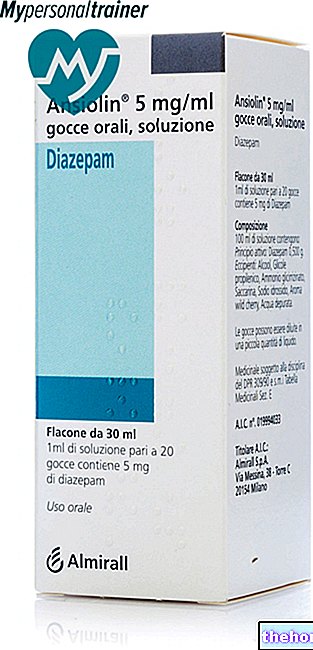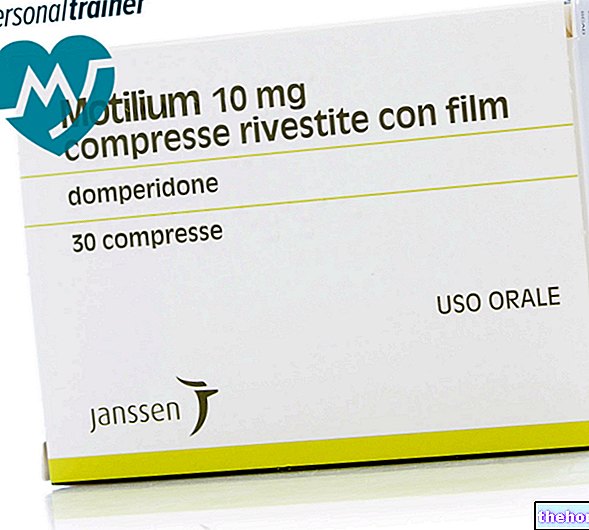Active ingredients: Chlorthalidone
IGROTON 25 mg tablets
Why is Igroton used? What is it for?
Pharmacotherapeutic group
Diuretics - Unassociated sulfonamides.
Therapeutic indications
Arterial hypertension, as monotherapy or in combination with other antihypertensive drugs. Edema following mild or moderate cardiac, renal or hepatic failure; premenstrual edema and idiopathic forms.
Contraindications When Igroton should not be used
Anuria; severe renal insufficiency (creatinine clearance less than 30 ml / min) and severe hepatic insufficiency; individual hypersensitivity to chlorthalidone and other sulfonamide derivatives or any other excipient; refractory hypokalaemia or conditions involving increased potassium loss, hypoatremia; symptomatic hypercalcemia and hyperuricaemia (history of gout or uric acid stones). Contraindicated in pregnancy.
Precautions for use What you need to know before taking Igroton
Igroton should be used with caution in patients with impaired liver function or progressive liver disease as minor changes in fluid and electrolyte balance due to thiazide diuretics can precipitate hepatic coma, especially in patients with liver cirrhosis (see Contraindications).
Igroton should be used with caution in patients with severe kidney disease. In such patients, thiazide diuretics may precipitate azotaemia and the effects on repeated administration may be cumulative.
Electrolytes
Treatment with thiazide diuretics has been associated with electrolyte disturbances such as hypokalaemia, hypomagnesaemia, hypercalcaemia and hyponatremia. Hypokalaemia can sensitize the heart or dramatically increase its response to the toxic effects of digitalis. Like all thiazide diuretics, Igroton-induced excretion of potassium in the urine is dose dependent and varies in magnitude from one subject to another. 25-50 mg / day the decrease in serum potassium concentrations averages 0.5 mmol / L. In the case of chronic treatment, serum potassium concentrations should be monitored at the start of therapy and then after 3-4 weeks. Thereafter, checks should be performed every 4-6 months - if the electrolyte balance of potassium is not affected by additional factors (eg vomiting, diarrhea, changes in renal function, etc.). If necessary, Igroton can be combined with oral potassium supplementation therapy or a potassium-sparing diuretic (e.g. triamterene). In case of combinations the serum potassium levels should be monitored. If hypokalaemia is accompanied by clinical signs (eg muscle weakness, paresis, and ECG changes), Igroton should be discontinued.
In patients already receiving ACE inhibitors, the association of Igroton with potassium salts or potassium-sparing diuretics should be avoided.
Monitoring of serum electrolytes is particularly indicated in elderly patients, in patients with ascites caused by liver cirrhosis and in patients with edema due to nephrotic syndrome. In the event of this latter condition, Igroton should only be used under close monitoring in patients with a normal concentration of potassium in the blood and without signs of volume depletion.
Metabolic effects
Igroton can increase serum uric acid levels, however gout attacks rarely occur during chronic treatment. Although glucose tolerance can be adversely affected, diabetes mellitus occurs very rarely during treatment. Small and partially reversible increases in plasma concentrations of total cholesterol, triglycerides, or low-density lipoprotein have been reported in patients on long-term treatment with thiazide or thiazide-like diuretics. The clinical relevance of these findings is under discussion
. Igroton should not be used as a drug of first choice in the long-term treatment of patients with overt diabetes mellitus or in patients being treated for hypercholesterolemia (diet or combination therapy).
Other effects
The antihypertensive effect of ACE inhibitors is potentiated by agents that increase the activity of circulating renin (diuretics). It is recommended to reduce the dosage of the diuretic or to discontinue it for 2-3 days and / or to initiate therapy with ACE inhibitors at a low starting dose.
Interactions Which drugs or foods may change the effect of Igroton
As diuretics increase blood lithium levels, these should be monitored in patients receiving lithium and chlorthalidone therapy. Where lithium has induced polyuria, diuretics can have a paradoxical antidiuretic effect.
Diuretics potentiate the action of curare derivatives and antihypertensive drugs (eg guanethidine, methyldopa, beta-blockers, vasodilators, calcium channel blockers, ACE inhibitors).
The hypokalaemic effect of diuretics can be enhanced by corticosteroids, ACTH, β2 agonists, amphotericin and carbenoxolone.
Dosage of insulin and oral antidiabetics may need to be adjusted.
Hypokalaemia or hypomagnesaemia due to thiazide diuretics may favor digitalis-induced cardiac arrhythmias (see Precautions for use).
The concomitant administration of some non-steroidal anti-inflammatory drugs (eg indomethacin) may reduce the diuretic and antihypertensive activity of diuretics; there have been isolated cases of deterioration of renal function in predisposed patients.
Concomitant administration of thiazide diuretics may increase the incidence of hypersensitivity reactions to allopurinol, increase the risk of adverse events caused by amantadine, increase the hyperglycemic effect of diazoxide and reduce renal excretion of cytotoxic agents (eg. cyclophosphamide, methotrexate) and potentiate their myelosuppressive effects.
The bioavailability of thiazide-type diuretics may be increased by anticholinergic agents (e.g. atropine, biperidene), apparently due to a decrease in gastrointestinal motility and stomach emptying rate.
Absorption of thiazide diuretics may be impaired in the presence of anion exchange resins such as cholestyramine. A decrease in pharmacological effect may be expected.
Administration of thiazide diuretics with Vitamin D or with calcium salts can potentiate the increase in serum calcium levels.
Concomitant treatment with cyclosporine may increase the risk of hyperuricaemia and gout-like complications.
Warnings It is important to know that:
Effects on ability to drive and use machines
Igroton, especially at the start of therapy, can slow down the patient's reflexes, for example when driving or using machines.
Pregnancy and breastfeeding
Igroton, like other diuretics, may reduce the blood supply of the placenta. Thiazide and related diuretics enter the fetal circulation and may cause disturbances in the plasma electrolyte picture. Following administration of thiazide and related diuretics have been reported. cases of neonatal thrombocytopenia, therefore Igroton should not be used in pregnancy unless there are alternative safer treatments.
Since chlorthalidone passes into breast milk, therapy should be avoided during lactation.
For those who carry out sporting activities: the use of the drug without therapeutic necessity constitutes doping and can in any case determine positive anti-doping tests.
Dosage and method of use How to use Igroton: Dosage
As with all diuretics, therapy should be started with the lowest possible dose. Dosage should be individualized based on the clinical picture and individual patient response.
When a single dose is prescribed both daily and every other day, this should preferably be taken in the morning, during breakfast. Hypertension The clinically useful dose range is 12.5-50 mg / day. The recommended starting doses are 12.5 or 25 mg / day, the latter being sufficient to produce the maximum hypotensive effect in most patients. For a given dose , the full effect is reached after 3-4 weeks. If blood pressure decrease is inadequate with 25 or 50 mg / day, combination treatment with other antihypertensive drugs (eg beta blockers, ACE inhibitors, reserpine) is recommended (see Precautions for use).
Edema of specific origin (see Indications)
The lowest effective dosage should be individualized and given only for limited periods. It is recommended that the dose does not exceed 50 mg / day.
Elderly patients and patients with impaired renal function
The lowest standard effective dose of Igroton is also recommended for patients with mild renal impairment and in elderly patients. Elimination of chlorthalidone occurs more slowly in elderly patients than in healthy young adults, although absorption is the same. Therefore elderly patients being treated with chlorthalidone should be closely monitored.
Igroton and thiazide diuretics lose their diuretic effect if creatinine clearance is <30 ml / min.
Overdose What to do if you have taken too much Igroton
In poisoning caused by overdose, the following can occur: a sense of instability, nausea, somnolence, hypovolemia, hypotension, cardiac arrhythmias and muscle spasms.
While waiting for the doctor, induce vomiting.
Side Effects What are the side effects of Igroton
Electolytic and metabolic disorders:
Very common:especially at higher doses, hypokalaemia, hyperuricaemia and increased plasma lipids.
Common: hyponatremia, hypomagnesemia and hyperglycemia.
Rare: glycosuria, aggravation of metabolic diabetes and gout.
Very rare: hypochloraemic alkalosis.
Skin:
Common: urticaria and other forms of skin rash.
Rare: photosensitization.
Liver:
Rare: intrahepatic colostasis, jaundice.
Cardiovascular system
Common: orthostatic hypotension, which may be aggravated by alcohol, anesthetics, or sedatives.
Rare: cardiac arrhythmias.
Central nervous system:
Common: dizziness;
Rare: headache.
Gastro-intestinal tract:
Common: anorexia and minor gastrointestinal pain.
Rare: mild nausea and vomiting, stomach pain, diarrhea, possible constipation.
Very rare: pancreatitis.
Blood:
Rare: thrombocytopenia, leukopenia, agranulocytosis and eosinophilia.
Others:
Common: impotence.
Rare: visual disturbances.
Very rare: idiosyncratic pulmonary edema (respiratory disorders). Allergic intestinal nephritis and vasculitis.
Compliance with the instructions contained in the package leaflet reduces the risk of undesirable effects.
It is important to inform the doctor or pharmacist of any undesirable effect, even if not described in the package leaflet.
Expiry and Retention
Expiry: see the expiration date. This date refers to the intact, properly stored packaging.
Warning: do not use the medicine after the expiry date shown on the package.
KEEP THE MEDICINAL PRODUCT OUT OF THE REACH AND SIGHT OF CHILDREN.
Composition
One tablet contains: 25 mg chlorthalidone. Excipients: microcrystalline cellulose; magnesium stearate; anhydrous colloidal silica; carmellose sodium; red iron oxide; yellow iron oxide.
Pharmaceutical form and content
Box of 30 tablets of 25 mg
Source Package Leaflet: AIFA (Italian Medicines Agency). Content published in January 2016. The information present may not be up-to-date.
To have access to the most up-to-date version, it is advisable to access the AIFA (Italian Medicines Agency) website. Disclaimer and useful information.
01.0 NAME OF THE MEDICINAL PRODUCT
IGROTON 25 MG TABLETS
02.0 QUALITATIVE AND QUANTITATIVE COMPOSITION
One tablet contains: 25 mg chlorthalidone.
For excipients see 6.1.
03.0 PHARMACEUTICAL FORM
Tablets (with pre-cut mark on one side).
04.0 CLINICAL INFORMATION
04.1 Therapeutic indications
Arterial hypertension: as monotherapy or in combination with other antihypertensive drugs.
Edema following heart failure, mild or moderate renal or hepatic insufficiency; premenstrual edema and idiopathic forms.
04.2 Posology and method of administration
As with all diuretics, therapy should be started with the lowest possible dose. Dosage should be individualized based on the clinical picture and individual patient response.
When a single dose is prescribed both daily and every other day, this should preferably be taken in the morning, during breakfast.
Hypertension
The clinically useful dose range is 12.5-50 mg / day. The recommended starting doses are 12.5 or 25 mg / day, the latter being sufficient to produce the maximum hypotensive effect in most patients. For a given dose, the full effect is reached after 3-4 weeks. If blood pressure decrease is inadequate with 25 or 50 mg / day, combination treatment with other antihypertensive drugs (e.g. beta blockers, ACE inhibitors, reserpine) is recommended (see Precautions).
Edema of specific origin (see Indications)
The lowest effective dosage should be individualized and given only for limited periods. It is recommended that the dose does not exceed 50 mg / day.
Elderly patients and patients with impaired renal function
The lowest standard effective dose of Igroton is also recommended for patients with mild renal impairment and elderly patients (see Pharmacokinetic properties).
Elimination of chlorthalidone occurs more slowly in elderly patients than in healthy young adults, although absorption is the same. Therefore elderly patients being treated with chlorthalidone should be closely monitored.
Igroton and thiazide diuretics lose their diuretic effect if creatinine clearance is
04.3 Contraindications
Anuria; severe renal insufficiency (creatinine clearance less than 30 mL / min) and severe hepatic insufficiency; individual hypersensitivity to chlorthalidone and other sulfonamide derivatives or any other excipient.
Refractory hypokalaemia or conditions involving increased potassium loss, hyponatremia and hypercalcaemia. Symptomatic hyperuricaemia (history of gout or uric acid stones). Contraindicated in pregnancy.
04.4 Special warnings and appropriate precautions for use
Warnings
Igroton should be used with caution in patients with impaired liver function or progressive liver disease as minor changes in fluid and electrolyte balance due to thiazide diuretics can precipitate hepatic coma, especially in patients with liver cirrhosis (see Contraindications).
Igroton should be used with caution in patients with severe kidney disease. In such patients, thiazide diuretics may precipitate azotaemia and the effects on repeated administration may be cumulative.
Precautions
Electrolytes
Treatment with thiazide diuretics has been associated with electrolyte disturbances such as hypokalaemia, hypomagnesaemia, hypercalcaemia and hyponatraemia.
Hypokalaemia can sensitize the heart or dramatically increase its response to the toxic effects of digitalis.
Like all thiazide diuretics, the potassium excretion induced by Igroton is dose dependent and varies in extent from one subject to another. With 25-50 mg / day the decrease in serum potassium concentrations is on average equal to 0.5 mmol / l. In the case of chronic treatment, serum potassium concentrations should be monitored at the start of therapy and then after 3-4 weeks. Thereafter, checks should be performed every 4-6 months - if the electrolyte balance of potassium is not affected by additional factors (eg vomiting, diarrhea, changes in renal function, etc.). If necessary, Igroton can be combined with oral potassium supplementation therapy or a potassium-sparing diuretic (eg triamterene). In case of combinations, serum levels of potassium should be monitored. If hypokalaemia is accompanied by clinical signs (eg muscle weakness, paresis, and ECG changes), Igroton should be discontinued.
In patients already receiving ACE inhibitors, the association of Igroton with potassium salts or potassium-sparing diuretics should be avoided.
Monitoring of serum electrolytes is particularly indicated in elderly patients, in patients with ascites caused by liver cirrhosis and in patients with edema due to nephrotic syndrome. In the event of this latter condition, Igroton should only be used under close monitoring in normokalemic patients with no signs of volume depletion.
Metabolic effects
Igroton can increase serum uric acid levels, however gout attacks rarely occur during chronic treatment.
Although glucose tolerance can be adversely affected, diabetes mellitus occurs very rarely during treatment.
Small and partially reversible increases in plasma concentrations of total cholesterol, triglycerides, or low-density lipoprotein have been reported in patients on long-term treatment with thiazide or simylthiazide diuretics. The clinical relevance of these findings is under discussion.
Igroton should not be used as a drug of first choice in the long-term treatment of patients with overt diabetes mellitus or in patients being treated for hypercholesterolemia (diet or combination therapy).
Other effects
The antihypertensive effect of ACE inhibitors is potentiated by agents that increase the activity of circulating renin (diuretics). It is recommended to reduce the dosage of the diuretic or to discontinue it for 2-3 days and / or to initiate therapy with ACE inhibitors at a low starting dose.
04.5 Interactions with other medicinal products and other forms of interaction
As diuretics increase blood lithium levels, these should be monitored in patients receiving lithium and chlorthalidone therapy. Where lithium has induced polyuria, diuretics can have a paradoxical antidiuretic effect.
Diuretics potentiate the action of curare derivatives and antihypertensive drugs (eg guanethidine, methyldopa, beta-blockers, vasodilators, calcium channel blockers, ACE inhibitors).
The hypokalaemic effect of diuretics can be enhanced by corticosteroids, ACTH, β2 agonists, amphotericin and carbenoxolone.
Dosage of insulin and oral antidiabetics may need to be adjusted.
Hypokalaemia or hypomagnesaemia due to thiazide diuretics may promote digitalis-induced cardiac arrhythmias (see "Special warnings and precautions for use").
The concomitant administration of some non-steroidal anti-inflammatory drugs (eg indomethacin) may reduce the diuretic and antihypertensive activity of diuretics; there have been isolated cases of deterioration of renal function in predisposed patients.
Concomitant administration of thiazide diuretics may increase the incidence of hypersensitivity reactions to allopurinol, increase the risk of adverse events caused by amantadine, increase the hyperglycemic effect of diazoxide and reduce renal excretion of cytotoxic agents (eg. cyclophosphamide, methotrexate) and potentiate their myelosuppressive effects.
The bioavailability of thiazide-type diuretics may be increased by anticholinergic agents (e.g. atropine, biperidene), apparently due to a decrease in gastrointestinal motility and stomach emptying rate.
Absorption of thiazide diuretics may be impaired in the presence of anion exchange resins such as cholestyramine. A decrease in pharmacological effect may be expected.
Administration of thiazide diuretics with Vitamin D or with calcium salts can potentiate the increase in serum calcium levels.
Concomitant treatment with cyclosporine may increase the risk of hyperuricaemia and gout-like complications.
04.6 Pregnancy and lactation
Igroton, like other diuretics, can reduce blood supply to the placenta.
Thiazide and related diuretics enter the fetal circulation and can cause disturbances in the plasma electrolyte picture. Cases of neonatal thrombocytopenia have been reported following administration of thiazide diuretics and related diuretics. Therefore Igroton should not be used in pregnancy unless there are alternative safer therapies.
Since chlorthalidone passes into breast milk, therapy should be avoided during lactation.
04.7 Effects on ability to drive and use machines
Igroton, especially at the beginning of the treatment, can make the patient's ability to react, for example when driving or operating machinery.
04.8 Undesirable effects
Frequency assessment: very rare ≥0.01% a uncommon from ≥0.1% at ≥1% at ≥10%
Electrolyte and metabolic disorders
Very common: especially at higher doses, hypokalaemia, hyperuricaemia and increased plasma lipids.
Common: hyponatremia, hypomagnesaemia and hyperglycemia.
Rare: hypercalcemia, glycosuria, aggravation of metabolic diabetes and gout.
Very rare: hypochloraemic alkalosis.
Skin
Common: hives and other forms of skin rash.
Rare: photosensitization.
Liver
Rare: intrahepatic colostasis, jaundice.
Cardiovascular system
Common: orthostatic hypotension, which may be aggravated by alcohol, anesthetics or sedatives.
Rare: cardiac arrhythmias
Central nervous system
Common: dizziness.
Rare: paraesthesia, headache.
Gastro-intestinal tract
Common: anorexia and small gastrointestinal pains.
Rare. mild nausea and vomiting, stomach pain, diarrhea, constipation.
Very rare: pancreatitis.
Blood
Rare: thrombocytopenia, leukopenia, agranulocytosis and eosinophilia.
Others
Common: impotence.
Rare: visual disturbances.
Very rare: idiosyncratic pulmonary edema (respiratory disorders). Allergic intestinal nephritis and vasculitis.
04.9 Overdose
Manifestations and symptoms
Dizziness, nausea, somnolence, hypovolaemia, hypotension and electrolyte disturbances associated with cardiac arrhythmias and muscle spasms may occur in poisoning due to overdose.
Treatment
Induction of vomiting or gastric lavage and administration of activated charcoal if the patient is conscious. Artificial plasma supplementation may be required.
05.0 PHARMACOLOGICAL PROPERTIES
05.1 Pharmacodynamic properties
Pharmacotherapeutic group: diuretics - unassociated sulfonamides.
ATC code: C03BA04.
Chlorthalidone, the active substance of Igroton, is a benzothiazide diuretic chemically and pharmacologically related to thiazide diuretics with a long duration of action. It acts primarily at the level of the distal renal tubule (first convoluted tract), inhibiting the reabsorption of NaCl- (antagonizing cotransport Na + -Cl-) and promoting the reabsorption of Ca ++ (through an unknown mechanism). The "increased passage of Na + and water in the cortical tract of the collecting tubule and / or" increased flow velocity produce an increase in secretion and of the excretion of K + and H +. In people with normal renal function, diuresis is induced following the administration of 12.5 mg of Igroton. The relative increase in urinary excretion of sodium and chloride and the less marked increase in potassium in the urine are dose dependent and occur in both normal and oedematous patients. The diuretic effect occurs in 2-3 hours, reaches its maximum after 4-24 hours and can persist for 2-3 days.
Diuresis induced by thiazide diuretics initially results in a decrease in plasma volume, cardiac output and systemic pressure. The renin-angiotensin-aldosterone system can become activated.
In hypertensive subjects, chlorthalidone can moderately reduce blood pressure. In case of continuous administration, the hypotensive effect is maintained, presumably due to the fall in peripheral resistance; cardiac output returns to the values it had before treatment, plasma volume remains somewhat reduced and circulating renin activity may be increased.
Following chronic administration, the antihypertensive effect of Igroton is dose dependent for doses between 12.5 and 50 mg / day. Increasing the dose beyond 50 mg increases metabolic complications and there is rarely a beneficial therapeutic effect.
As with other diuretics, when Igroton is administered alone, blood pressure control is achieved in half of patients with mild to moderate hypertension. In general, elderly and black patients respond well to diuretics given as the main treatment. Randomized clinical trials in the elderly have shown that treatment of hypertension or systolic hypertension predominant in older patients with low doses of thiazide diuretics, including chlorthalidone, reduces cerebrovascular (heart attack), coronary and total cardiovascular morbidity and mortality. .
Treatment in combination with other antihypertensive agents potentiates the effects on blood pressure lowering. In a large proportion of patients who do not respond adequately to monotherapy, a "further decrease in blood pressure can consequently be achieved."
Since thiazide diuretics including Igroton reduce the excretion of Ca ++, they have been used to prevent the formation of recurrent kidney stones of calcium oxalate. In addition, a reduction in bone loss has been observed in elderly women. that thiazide diuretics are useful in nephrogenic diabetes insipidus. The mechanism of action has not been clarified.
05.2 "Pharmacokinetic properties
Absorption and plasma concentration
The bioavailability of an oral dose of 50 mg is 64%.
Peak plasma concentrations are reached approximately 8-12 hours after administration. For doses of 25 and 50 mg, the mean Cmax values are 1.5 mcg / mL (4.4 mcmol / L) and 3.2 mcg / mL (9.4 mcmol / L), respectively. For doses up to 100 mg c "is a proportional increase in AUC. Following repeated daily dosing of 50 mg, mean steady-state plasma concentrations of 7.2 mcg / ml (21.2 mcmol / l), measured at the end of 24 hours of dosage interval, are reached after 1-2 weeks.
Distribution
Due to the high accumulation in erythrocytes and the binding to plasma proteins, there is only a small fraction of free chlorthalidone in the blood.
Having a high degree of binding affinity to carbonic anhydrase of erythrocytes, only about 1.4% of the total amount of chlorthalidone is recovered in plasma at steady state during treatment with 50 mg doses. In vitro, plasma protein binding of chlorthalidone it is about 76% and most of it is linked to albumin.
Chlorthalidone crosses the placenta and passes into breast milk. In mothers who were given 50 mg of chlorthalidone daily before and after delivery, the levels of chlorthalidone in fetal whole blood were approximately 15% of those found in maternal blood. Concentrations of chlorthalidone in amniotic fluid and in breast milk they were approximately 4% of those in maternal blood.
Metabolism
Metabolism and hepatic excretion via the bile represent a minor route of elimination. Within 120 hours, approximately 70% of the dose is excreted in the urine and faeces, mostly unchanged.
Elimination
Chlorthalidone is eliminated from the entire blood and plasma circulation with an elimination half-life of approximately 50 hours. The elimination half-life is unaltered after chronic administration. Most of the absorbed dose of chlorthalidone is excreted via the kidney, with a mean renal plasma clearance of 60 mL / min.
Special patient groups
Changes in renal function do not alter the pharmacokinetics of chlorthalidone, the affinity of the drug to the carbonic anhydrase of the erythrocytes being the limiting factor in the rate of elimination of the drug from the blood or plasma. No dosage adjustment is necessary in patients with impaired renal function.
Elimination of chlorthalidone occurs more slowly in elderly patients than in healthy young adult subjects, although absorption is the same.
Therefore, close medical supervision of elderly patients being treated with chlorthalidone is indicated.
05.3 Preclinical safety data
Experiments on the induction of gene mutations in bacteria or cultured mammalian cells have yielded negative results. At highly cytotoxic assays, chromosomal aberrations are induced in hamster ovary cell cultures. However, experiments conducted on the self-healing induction capacity of DNA. in rat hepatocytes or in mouse bone marrow micronuclei or rat liver did not reveal any evidence for the induction of chromosomal damage. Therefore it is believed that the results of the hamster ovary cell assays are derived from considerations related to cytotoxicity rather than genotoxicity. It can be concluded that chlorthalidone does not present a risk of mutagenesis in humans.
Long-term carcinogenicity studies have not been conducted with chlorthalidone.
Teratogenic studies in rats and rabbits did not reveal any teratogenic potential.
06.0 PHARMACEUTICAL INFORMATION
06.1 Excipients
Microcrystalline cellulose; magnesium stearate; anhydrous colloidal silica; carmellose sodium; red iron oxide; yellow iron oxide.
06.2 Incompatibility
None known.
06.3 Period of validity
5 years.
06.4 Special precautions for storage
None.
06.5 Nature of the immediate packaging and contents of the package
Non-toxic PVC blister
Box of 30 tablets 25 mg
06.6 Instructions for use and handling
None.
07.0 MARKETING AUTHORIZATION HOLDER
Amdipharm Ltd
3 Burlington road, Dublin 4 Temple Chambers - Ireland
08.0 MARKETING AUTHORIZATION NUMBER
A.I.C. n. 016861015
09.0 DATE OF FIRST AUTHORIZATION OR RENEWAL OF THE AUTHORIZATION
Authorization: 29.7.1981; renewal: 30/11/2009
10.0 DATE OF REVISION OF THE TEXT
July 2009




























